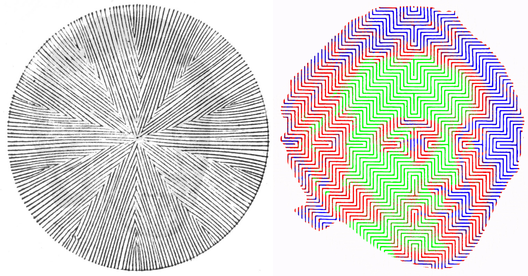Thomas Young1773–1829
Young was a physicist and a physician by training, but he was also a linguist and a cryptographer. His talents for languages were extraordinary: in his teens he mastered many different languages including Hebrew, Arabic and Persian, and in his mature age he commenced the deciphering of the Rosetta Stone. In visual science he explained the process of accommodation, and proposed a theory of colour vision based on three receptors, sensitive to different regions of the spectrum. His experiments on interference fringes provided support for a wave theory of light in opposition to Newton’s corpuscular theory. Descartes had earlier speculated that accommodation occurred as a consequence of variations in the curvature of the crystalline lens, but the alternative of corneal curvature changes was still entertained. In 1801 Young demonstrated that the former interpretation was correct by noting that accommodation persisted when the eye was immersed in water, eliminating corneal refraction. In addition, patients without a lens were unable to accommodate to objects at different distances. He also made detailed measurements of the dimensions of his eyes using an optometer of his own devising. In 1802 he advanced his theory of colour vision: “Now, as it is almost impossible to conceive each sensitive point of the retina to contain an infinite number of particles, each capable of vibrating in perfect unison with every possible undulation, it becomes necessary to suppose the number limited, for instance, to the three principal colours, red, yellow, and blue”. Later he changed the principal or primary colours to red, green, and violet. Young was born in Somerset and died in London after a distinguished career covering remarkably wide scientific interests. He was a precocious child who was self-taught in languages and science. He studied medicine at London, Edinburgh, and Göttingen and practiced in London while holding the posts of Professor of Natural Philosophy at the Royal Institution and then foreign secretary of the Royal Society. Young described the optical aberration of astigmatism, the condition in which lines in different orientations cannot be brought to a focus in the same plane; when one set of lines are sharply focused the other appear blurred, and vice versa. Young measured the astigmatism of his own eye. Regular astigmatism is usually a consequence of the curvatures of optical surfaces in the eye (most commonly of the cornea) not being parts of spheres, but Young attributed it to an asymmetry in his lens. On the left, Young’s portrait is embedded in his diagram of the crystalline lens. On the right he is defined by a pattern of vertical and horizontal lines that will expose astigmatism; the lines are coloured in the three primaries that he proposed.
